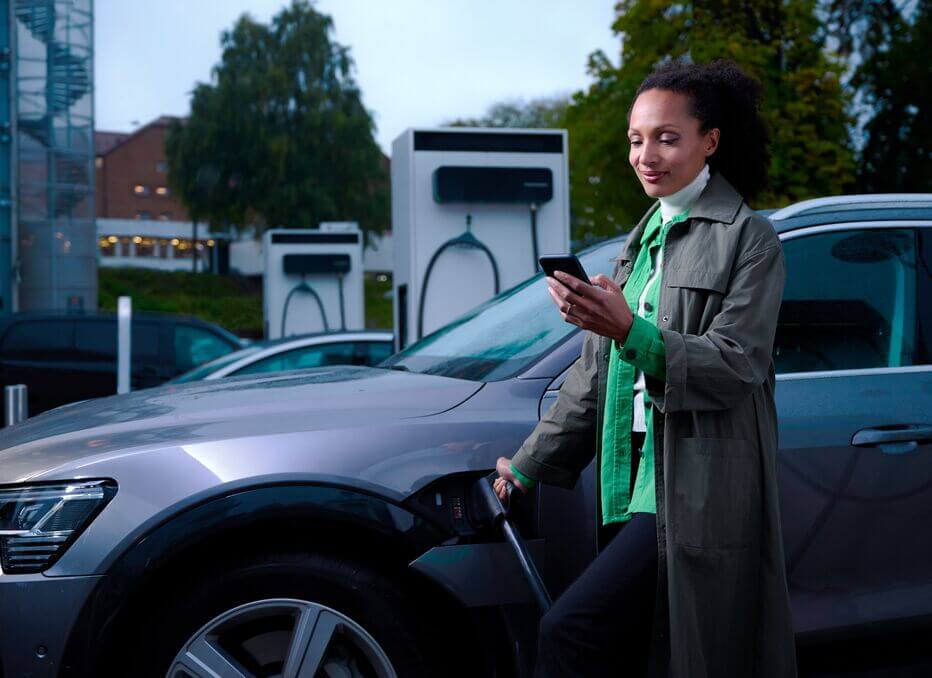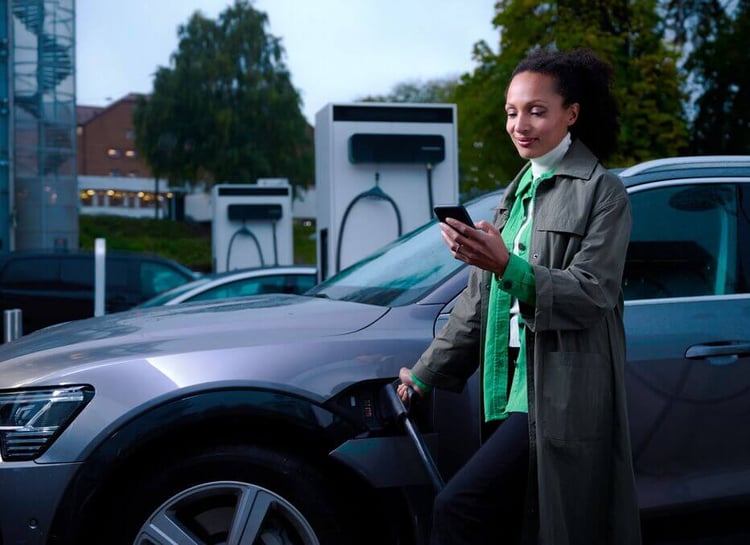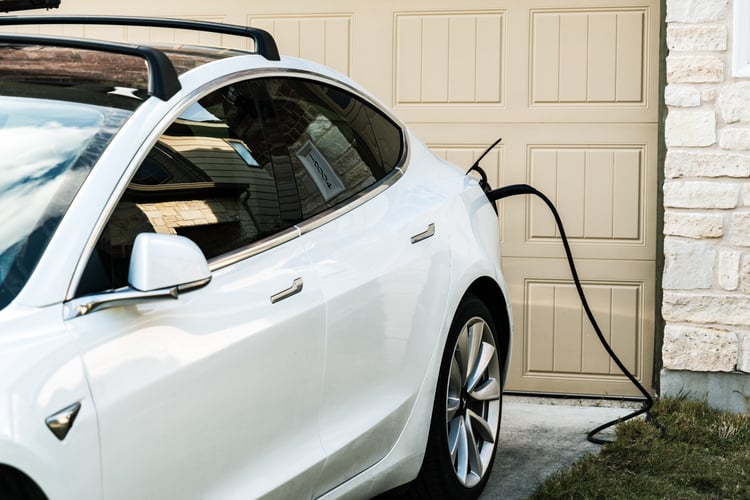
Getting the AFIR right to fuel Europe’s bold climate ambitions
The EV charging infrastructure we build today lays the foundation for tomorrow. To that end, Europe requires regulation that will promote and support the transformation towards more sustainable transport.
And that’s exactly what the European Union (EU) has set out to do – with the proposed Alternative Fuels Infrastructure Regulation (AFIR). It revises existing legislation to mandate minimum targets for EV charging infrastructure and to harmonize related requirements across the 27 EU countries.
Let’s take a closer look at this proposal. What is it exactly? How do we feel about it and what do we propose to change?
What is the Alternative Fuels Infrastructure Regulation (AFIR)?
The AFIR sets pan-EU rules and targets for developing publicly available refueling and recharging points that go beyond electrification. For the sake of this article, let’s focus on how it affects the build-up of EV charging infrastructure. Key principles of the AFIR are that EV charging is fair, open, and accessible.
Proposed in July 2021, the AFIR is currently going through the last rounds of negotiations. Once it’s adopted, it will apply across the EU– between late 2023 or early 2024.

At EVBox, we strongly support the AFIR's ambitions and approach - from price transparency to data sharing that can benefit both customers and innovation. We applaud the aim to push further for a harmonized ecosystem that will enable EU-wide investments and the roll-out of EV charging infrastructure, establishing a level playing field of rules.
That said, we also have some suggestions on what the negotiators should consider so that the EV charging rollout can match Europe’s bold climate ambitions for 2030 and beyond.
How to improve the AFIR to avoid missing opportunities?
Some of the negotiators have proposed a change to the AFIR text to mandate that every publicly accessible charging station in Europe be fitted with a payment card reader.
The rationale? People are used to paying for gasoline with their payment cards and the EU doesn't want to make the transition to electric mobility harder for them.
While this may sound great on paper, the reality is a bit more complex. As we explain below, this requirement is likely to slow down innovation and EV adoption and could actually harm the convenience that the AFIR aims to achieve in the first place.
The headache of ‘one-off’ payments
When traveling through Europe today, EV drivers at times experience difficulties using charging stations. In order to charge their vehicle and pay for the recharging service, they may have to download another app, create another account or purchase a new subscription that they don’t need in their home country or city.
We agree that this challenge should be tackled. We also fully agree that the EU should stand on the side of customers and make their lives easier when paying for EV charging.
However, what we disagree with is that putting a payment card reader on every charging station should be the way forward.
One reason is that today, 95 percent of European EV drivers don’t pay for charging with their credit or debit cards but take advantage of payment plans and subscriptions - as they do when watching TV, listening to music, or hailing a taxi.

Another reason is that there’s a better solution available: Roaming.
EV Roaming and the Single Market approach
Since 2017, Europeans can "Roam-like-at-Home", using their mobile phones at no extra cost wherever they are within the EU. Taking a similar approach to EV charging would be beneficial for drivers and would fit well within the EU’s Single Market principle.

The EU aims to enable EU citizens to study, live, shop, work and retire in any EU country, and enjoy products and services from all over Europe. Applying the same approach to EV charging could be a game changer for the rapid and widespread deployment across the continent.
The EV roaming concept already exists in theory. In practice, the EU still needs to develop a common minimum roaming requirement. Today, there is still no EU Single Market in EV charging, as our CEO Remco Samuels recently noted.
EV roaming would be a significant step further in that direction, allowing EV drivers to charge at any publicly accessible charging point out of their network, whether within their country or in other EU member states. Without having to worry about taking up a contract with a new provider.
And the best part? The vast majority of charging stations are already EV roaming compatible.
Tailoring solutions to different challenges
Admittedly, adding a direct payment terminal on new DC fast charging stations should not cause major issues. There’s enough space on these relatively large stations, so incorporating a payment terminal would represent only a fraction of the production cost and hence lead to a minor increase in the charging session price for EV drivers.

However, payment terminals make very little sense – if any – for slow AC chargers. They are technically difficult to fit into the footprint of an AC charger due to their small size and design. And they are prohibitively expensive considering an AC charger’s manufacturing cost, the relatively small number of daily charging sessions, and their related daily revenue which is much smaller than for DC chargers.
As a result, the price of a charging session for the EV driver on an AC charger with a payment terminal will increase significantly – with no tangible customer benefit.

Retrofitting existing infrastructure
The proposed text change in the AFIR leaves little room for misinterpretation: if every publicly accessible charging station in Europe is to be fitted with a payment card reader, this also includes every publicly accessible charging station ever installed.
This will likely lead to perfectly operational AC stations being taken out of operation. As a result, we would be reducing instead of expanding the installed base of EV chargers across the EU.
With such a wide-scale retrofitting operation and technicians already being scarce today, we would hardly be setting ourselves up for accelerating the rollout of electric mobility infrastructure and meeting the “Fit for 55" targets.
We should ask ourselves, is it really worth it to focus on updating existing equipment with older technology? At the cost of expanding and evolving our charging infrastructure? Especially when we have more innovative solutions available?
If you’re thinking, no it isn’t, then we agree.

Conclusion
The AFIR is a hopeful first step toward a well-functioning EU-wide Single Market in EV charging. It would help to move the EV charging experience closer to the filling up of a conventional vehicle’s fuel tank – allowing EV drivers to use more charging stations, make informed choices about which one fits their needs best, and travel without difficulties anywhere in the EU.
For the past years, drivers often have had to deal with fragmented and poorly connected EV charging systems across the 27 countries. We think the AFIR has the potential to kickstart regulatory harmonization across all EU member states.
However, we call on the AFIR negotiators to be bold and build out an accessible electric mobility network in Europe based on forward-looking technologies like EV roaming. We urge them not to dwell on yesterday’s way of doing things.
It’s not an exaggeration to say that we literally stand at a crossroads. The solutions we choose today will affect the speed of EV charging adoption for consumers, attractiveness for private enterprises, and overall electrification of Europe. We hope that the EU negotiators will choose to lean in with the current consumer trends and the industry best practices, and set Europe up for success.
About the author

Zuzana Púčiková is EVBox’s Director Public Policy Europe since February 2023. In this role - as well as the Chair of the Management Committee of ChargeUp Europe and the European Climate Pact Ambassador - she promotes the role of electromobility in powering a sustainable future and advocates for policies to accelerate it. A Slovak national, Zuzana is a multilingual public affairs professional, with over 15 years of experience working on digital and consumer topics in European institutions, the private sector, and media. She graduated in Economics and holds M.A. degrees in European and international affairs.
Related articles

Emerging calibration laws in the fast EV charging market
Calibration laws are legal frameworks adopted by countries around the world to ensure public EV charging stations...

Getting the AFIR right to fuel Europe’s bold climate ambitions
The EV charging infrastructure we build today lays the foundation for tomorrow. To that end, Europe requires regulation...

EV smart charging regulations 2022 explained
Electric mobility has been unquestionably emerging in recent years and is expected to continue growing exponentially in...
